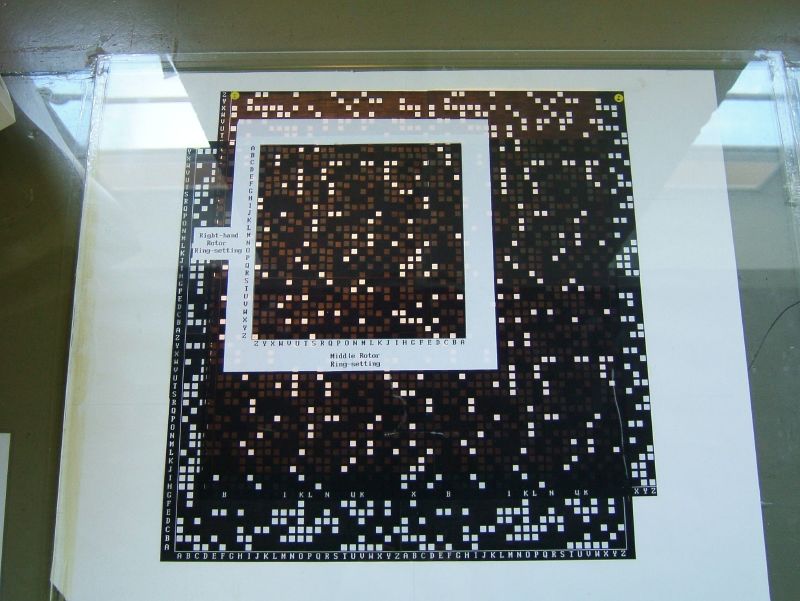John R.F. Jeffreys on:
[Wikipedia]
[Google]
[Amazon]
 John Robert Fisher Jeffreys (25 January 1916 – 13 January 1944) was a British mathematician and World War II
John Robert Fisher Jeffreys (25 January 1916 – 13 January 1944) was a British mathematician and World War II
 John Robert Fisher Jeffreys (25 January 1916 – 13 January 1944) was a British mathematician and World War II
John Robert Fisher Jeffreys (25 January 1916 – 13 January 1944) was a British mathematician and World War II codebreaker
Cryptanalysis (from the Greek ''kryptós'', "hidden", and ''analýein'', "to analyze") refers to the process of analyzing information systems in order to understand hidden aspects of the systems. Cryptanalysis is used to breach cryptographic sec ...
.
A research fellow at Downing College, Cambridge, Jeffreys joined the codebreaking
Cryptanalysis (from the Greek ''kryptós'', "hidden", and ''analýein'', "to analyze") refers to the process of analyzing information systems in order to understand hidden aspects of the systems. Cryptanalysis is used to breach cryptographic sec ...
efforts at Bletchley Park
Bletchley Park is an English country house and estate in Bletchley, Milton Keynes (Buckinghamshire) that became the principal centre of Allied code-breaking during the Second World War. The mansion was constructed during the years following 1 ...
in September 1939 alongside fellow Cambridge mathematicians Gordon Welchman
William Gordon Welchman (15 June 1906 – 8 October 1985) was a British mathematician. During World War II, he worked at Britain's secret codebreaking centre, "Station X" at Bletchley Park, where he was one of the most important contributors. ...
, with whom he had previously worked closely, and Alan Turing
Alan Mathison Turing (; 23 June 1912 – 7 June 1954) was an English mathematician, computer scientist, logician, cryptanalyst, philosopher, and theoretical biologist. Turing was highly influential in the development of theoretical co ...
. These three, together with Peter Twinn and working under Dilly Knox
Alfred Dillwyn "Dilly" Knox, CMG (23 July 1884 – 27 February 1943) was a British classics scholar and papyrologist at King's College, Cambridge and a codebreaker. As a member of the Room 40 codebreaking unit he helped decrypt the Zimmer ...
, formed the research section working on the German Enigma machine, and were housed in "The Cottage" at Bletchley Park.
Jeffreys was put in charge of a small section manufacturing perforated sheets for use in the cryptanalysis of the Enigma
Cryptanalysis of the Enigma ciphering system enabled the western Allies in World War II to read substantial amounts of Morse-coded radio communications of the Axis powers that had been enciphered using Enigma machines. This yielded military i ...
, a task which took over three months, completed on 7 January 1940.Ralph Erskine, "The Poles Reveal their Secrets: Alastair Denniston's Account of the July 1939 Meeting at Pyry", pp. 294-305, ''Cryptologia'' 30(4), December 2006 One type were the Zygalski sheets
The method of Zygalski sheets was a cryptologic technique used by the Polish Cipher Bureau before and during World War II, and during the war also by British cryptologists at Bletchley Park, to decrypt messages enciphered on German Enigma mach ...
, known as ''Netz'' at Bletchley Park, a technique revealed to the British by Polish cryptologists. Another type, named "Jeffreys sheets", were different, and were a "catalogue of the effect of any two Enigma rotors and the reflector". Jeffreys's perforated sheets were used by Polish cryptologists in exile in France to make the first wartime decryption of an Enigma message on 17 January 1940.Ralph Erskine, "Breaking Air Force and Army Enigma", p. 53 in ''Action this Day'', edited by Ralph Erskine and Michael Smith, 2001
In early 1940, a section called "Hut 6
Hut 6 was a wartime section of the Government Code and Cypher School (GC&CS) at Bletchley Park, Buckinghamshire, Britain, tasked with the solution of German Army and Air Force Enigma machine cyphers. Hut 8, by contrast, attacked Naval Enigma. ...
" — named after the building in which it was initially housed — was created to work on solving German Army and Air Force Enigma messages. Jeffreys was chosen to run the hut alongside Welchman. Jeffreys was in charge of "Sheet-Stacking and Machine Room activities", while Welchman handled "Registration, Intercept Control, Decoding, and relations with the intelligence people in Hut 3".
In May 1940,Gordon Welchman, ''The Hut Six Story'', p. 125 Jeffreys took a vacation, but became ill and was diagnosed with tuberculosis and diabetes.Gordon Welchman, ''The Hut Six Story'', p. 103 He died in January 1944.
Gordon Welchman later recalled:
:"''Jeffreys was very much liked at Bletchley Park. His death was a tragic loss to all of us. We felt deep sympathy for his fianceé, Pat Hempsted, who had been a member of his team from its beginnings in the Cottage. She was involved both in the initial punching of the sheets and in the testing of drops on which our early breaks depended.''"
References
Sources
* Updated and extended version of ''Action This Day: From Breaking of the Enigma Code to the Birth of the Modern Computer'' Bantam Press 2001 {{DEFAULTSORT:Jeffreys, John 20th-century British mathematicians Bletchley Park people Fellows of Downing College, Cambridge 1916 births 1944 deaths 20th-century deaths from tuberculosis Tuberculosis deaths in the United Kingdom Deaths from diabetes